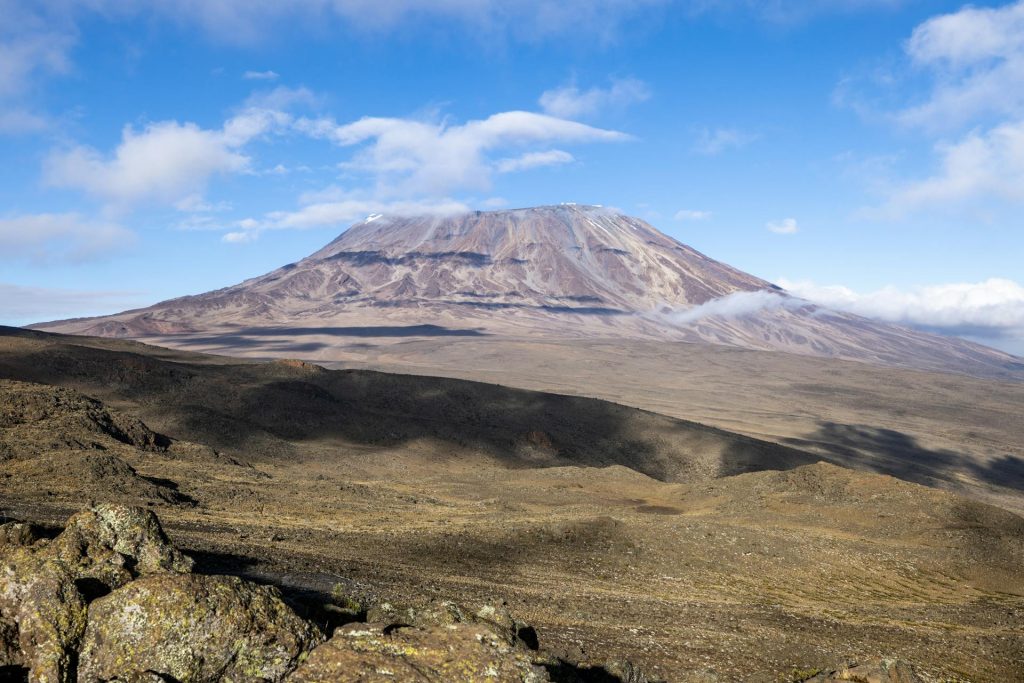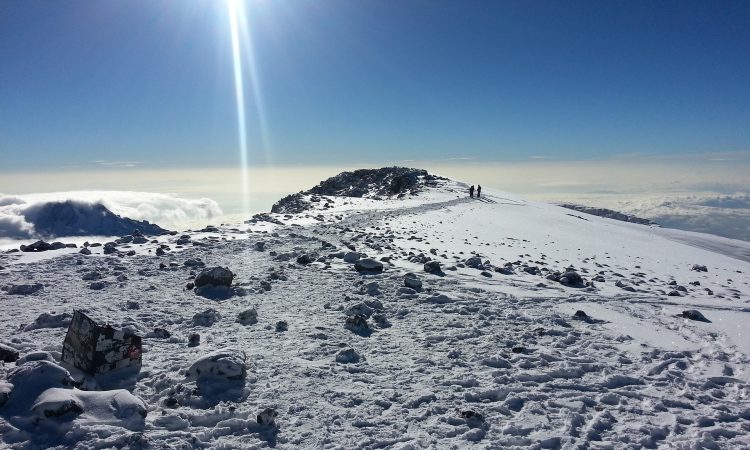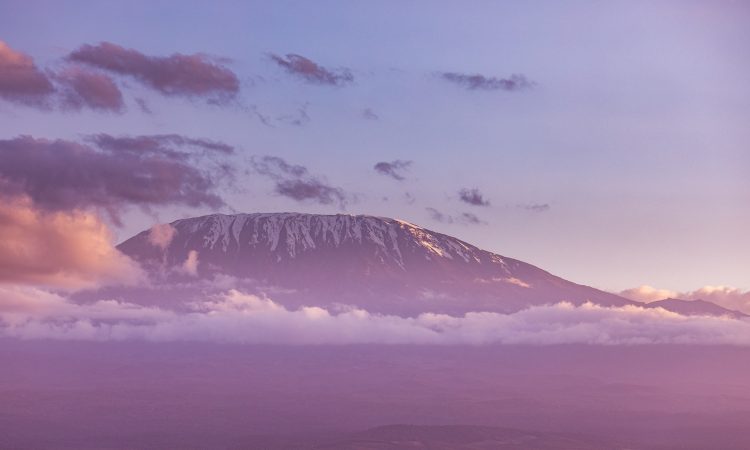What Is Mount Kilimanjaro Famous For? Mount Kilimanjaro, located in Tanzania, features five distinct climatic zones, including cultivated zones, rain-forest zones, desert zones, and arctic zones.
Mount Kilimanjaro is famous for being the tallest mountain in Africa and the highest freestanding mountain in the world, with an elevation of 5,895 meters above sea level. It was formed by volcanic activity when molten rocks erupted and accumulated on the Earth’s surface.
Although located just 300 kilometers from the equator, Kilimanjaro remains snow-capped throughout the year. The origin of its name is unclear, but by the 1860s, European explorers had adopted the name. Some believe it is derived from the Kiswahili words “kilima,” meaning “mountain,” and “njaro,” meaning “caravans.” Locals from the Jagga community, who live near the mountain, call it “Kibo,” meaning “snow.”
Trekking Destination

Mount Kilimanjaro is a famous trekking destination rather than a climbing destination. Despite its height and status as one of the world’s seven summits, it does not require technical climbing skills. About 30,000 people attempt to climb Kilimanjaro each year, but only 50% succeed, with altitude sickness being the main reason for failure.
Notable Records and Achievements
- Speed Climbs: Karl Egloff climbed and descended Kilimanjaro in 6 hours and 42 minutes in 2014. Killian Jornet reached Uhuru Peak in 5 hours and 23 minutes in 2010. Simon Mtuy achieved the fastest unaided ascent and descent in 9 hours and 19 minutes in 2006.
- Oldest Climber: Ann Lorimor climbed Kilimanjaro in 2019 at the age of 89.
- Youngest Climber: Keats Boyd climbed Kilimanjaro at the age of 7.
- Disabled Climbers: Individuals like Spencer West and Aaron Phipps, who are blind, have successfully reached the summit, highlighting Kilimanjaro’s accessibility.
Unique Features
- Africa’s Tallest Tree: The Entandrophragma excelsum tree, measuring 81.5 meters tall and estimated to be 600 years old, is found on Kilimanjaro. Scientists have called for the protection of the valley where this tree grows.
- Wooden Box at the Peak: A wooden box at the summit allows climbers to write their names and leave notes as a symbol of their achievement.
- Highest-Altitude Pizza Delivery: Kilimanjaro Pizza Hut holds the Guinness World Record for the highest-altitude pizza delivery on land.
- Glaciers: The glaciers on Kilimanjaro are believed to be 11,700 years old but are rapidly shrinking due to climate change.
Volcanic History
Mount Kilimanjaro is a stratovolcano with three volcanic cones:
- Kibo: The highest peak at 5,895 meters above sea level. Kibo is dormant but could erupt again. Its last major eruption was 360,000 years ago, and its most recent activity was 200,000 years ago.
- Mawenzi: Standing at 5,149 meters above sea level, Mawenzi is dormant.
- Shira: Shira stands at 3,962 meters above sea level. It collapsed to form the Shira Plateau.
Historical Significance
- First Climbers: Hans Meyer, Ludwig Purtscheller, and Yohani Kinyala Lauwo were the first to climb Kilimanjaro in 1889.
- First Woman to Summit: A Scottish woman trekked to the summit in 1927.
Ecological Systems
Mount Kilimanjaro hosts almost every type of ecological system, including:
- Cultivated zones.
- Bush-lands.
- Rain-forests.
- Heath/moorland zones.
- Alpine desert zones.
- Arctic zones.
Since 1912, Kilimanjaro has lost about 80% of its glaciers, and scientists predict they could disappear completely by 2050.
To combat climate change, about 5 million indigenous trees were planted at the base of Mount Kilimanjaro in 2008.
Mount Kilimanjaro is considered the easiest of the seven summits to climb because it does not require technical skills, specialized equipment, or prior mountaineering experience. This makes it a popular choice for first-time climbers.











